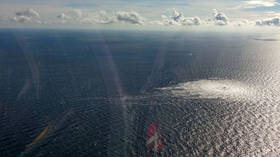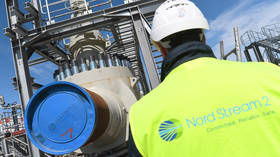Traces of explosives found on Nord Stream sabotage-linked yacht – NYT

German investigators have discovered traces of explosives on the Andromeda yacht linked to the Nord Stream sabotage last September, the New York Times has reported.
The information came from three unnamed German officials, the newspaper claimed in an article on Friday.
The same sources claimed that two out of the six crew members on the “pleasure” boat had used fake Bulgarian passports during the alleged operation against the gas pipelines.
In early March the Times had reported, citing US officials, that a “pro-Ukrainian group” might’ve been behind the attack that disabled the Nord Stream 1 and 2 pipelines, which were built to deliver Russian gas to Europe via Germany. The paper’s anonymous sources stressed that “no American or British nationals were involved” in the sabotage of the key energy infrastructure.
The vessel, which had allegedly been rented by the perpetrators to carry out the attack, was soon identified as the yacht Andromeda. The boat is now sitting in dry dock overlooking the Baltic Sea in north-eastern Germany, with “its innards pulled out by investigators,” the NYT said.
Kremlin press-secretary Dmitry Peskov suggested earlier that the articles about Andromeda’s involvement were distributed by the Western media in order to divert attention from the report by veteran American investigative journalist Seymour Hersh, which came shortly before the Western media reports and blamed Washington for the sabotage.
According to an informed source who talked with Hersh, explosives were planted on the pipelines in the Baltic Sea back in June 2022 by US Navy divers during a NATO exercise, and detonated remotely two months later on the order of American leader Joe Biden. The White House has rejected as “utterly false and complete fiction” the findings of the Pulitzer Prize-winning journalist
In its report on Friday, the NYT also quoted Johannes Riber, a naval officer and analyst at Denmark’s Institute for Strategy and War Studies, who also questioned claims of a 50-foot (15-meter) yacht being capable of carrying out an attack of such scale, likening them to a “James Bond” theory.
Andromeda could’ve well been a decoy or part of a broader mission, Riber suggested. But planting powerful explosives at the pipelines would’ve likely required an undersea drone or a mini-submarine, and a professional ship to transport it, he pointed out.
However, the article also contained comments by an unnamed pipeline expert and a professional diver, who both claimed that small bombs could’ve been enough to cripple the infrastructure if they were placed near a seam of the pipeline.













